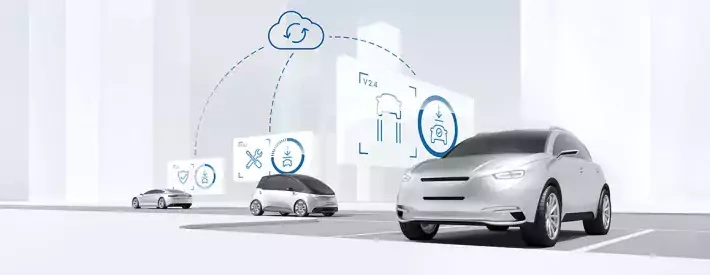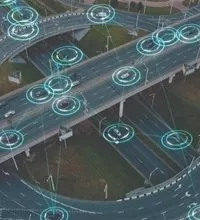In the cloud: Over-the-air repairs

In this article: As vehicles become more digitised, over-the-air updates and repairs will become more commonplace, but is the industry ready?
Of all the automotive megatrends, the fastest-moving yet most underreported is over-the-air (OTA) repairs. Imagine no longer having to take a vehicle to a garage or dealership but simply being able to download updates directly to your vehicle, just as you’d upgrade programmes on your computer, tablet or phone.
The technology, most often highlighted by Tesla, is becoming more widespread with both suppliers and vehicle manufacturers looking to integrate it into the cars on our roads.
Bosch says its IoT Cloud offers “the utmost security” for software or firmware updates to “simply and reliably optimise the vehicle without requiring a visit to the repair shop”. Let that sink in for a moment.
Insure and go
Chief Technical Officer at Thatcham Research, Richard Billyeald, describes OTA as “perhaps the greatest challenge facing insurers”. How can the industry price accurately when vehicle fundamentals could change overnight after users update onboard systems wirelessly.
“Data will be essential and we are already in discussion with the DVLA about how to take all this into account,” says Billyeald. “Functionality will need to be registered and Thatcham ratings will evolve to give insurers the information they need, right down to individual vehicle level.”
In the UK this could be seen as a new problem but in America, this is no longer theoretical. The National Highway Traffic Safety Administration recently launched an investigation into a 2019 Tesla update addressing reports of battery fires. Some owners said it led to decreased range and took legal action.
The previous year, following criticism of the Model 3’s brakes, CEO Elon Musk tweeted: “Firmware fix for upgraded brake performance on standard Model 3 started rolling out yesterday.” Subsequent tests showed the braking distance improved by almost 20ft. Impressive certainly, but also a disconcerting example of the changes now being made OTA.
In another high profile incident, a Chrysler OTA update sent infotainment screens into an endless reboot loop. However, despite this bumpy start, Ford, GM and others have announced that from 2020 their models will have OTA capabilities.
Time to get ready independents
Here in the UK, the aftermarket has long feared that vehicle manufacturers will use connected technology to scoop up repair work. Head of member services at the Independent Garage Association, Frank Harvey, says: “OTA repairs are on our radar because we have to make sure they are accessible to the independent sector.
“At the moment there are a lot of unanswered questions regarding customer choice, liability and cybersecurity. Will updates be free for the lifetime of the vehicle? Will independent garages be used as distribution points? Will we need legislation?
“Some vehicle manufacturers are already using OTA for non-safety related updates, so before long there could be tens of thousands of updates a year. The ability to update vehicles on-the-fly means there’s always the possibility that fixing one problem will have unforeseen knock-on effects, as we have seen with smartphones. Security will be vital.
Another issue is whether consumers will have any choice about accepting updates. Looking back to the emissions scandal, some drivers didn’t want to have the ‘fix’, and OTA updates could be a generational thing that younger drivers are more comfortable with.
“In many ways, the discussions around OTA are similar to those about moving to connected MOT equipment – it’s inevitable, but how should it be done? We are all for progress so long as garages can accommodate it,” says Harvey.




